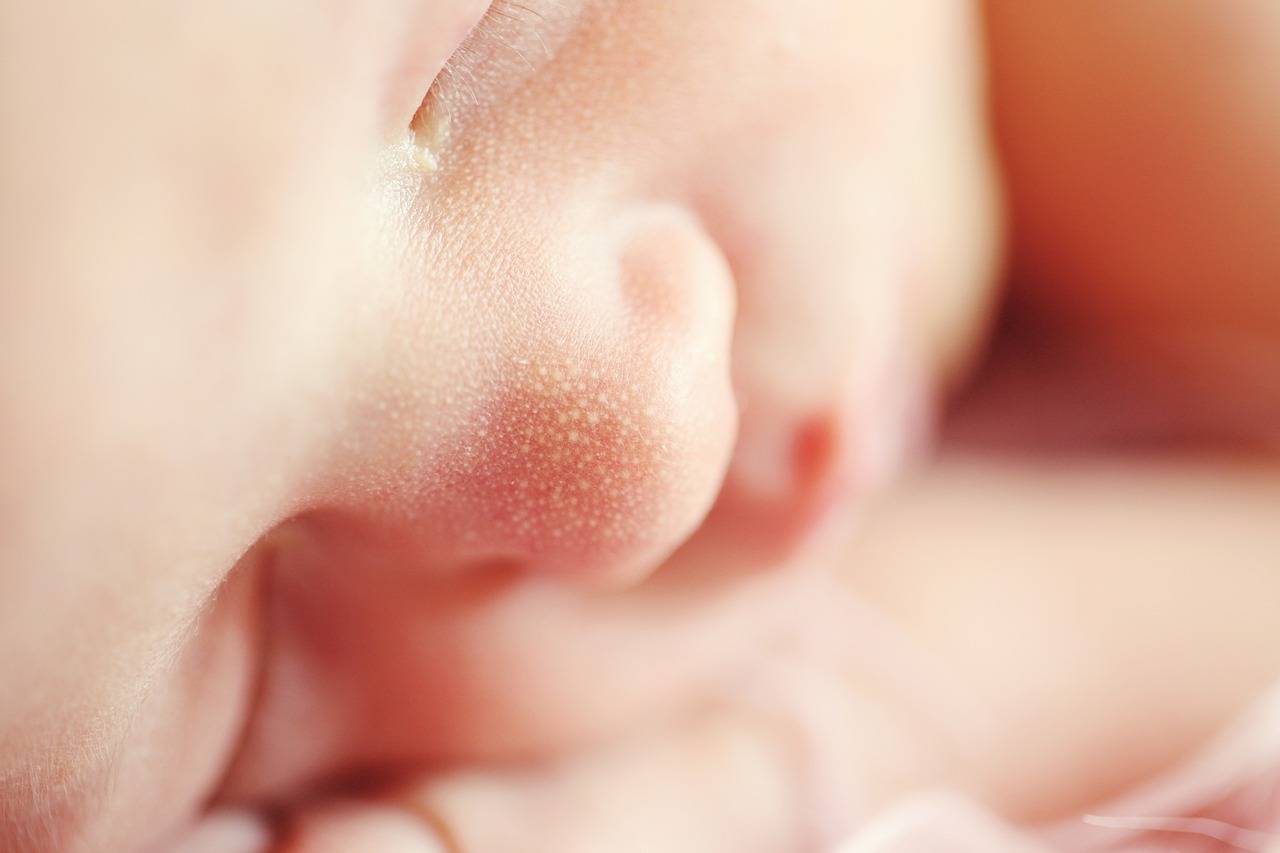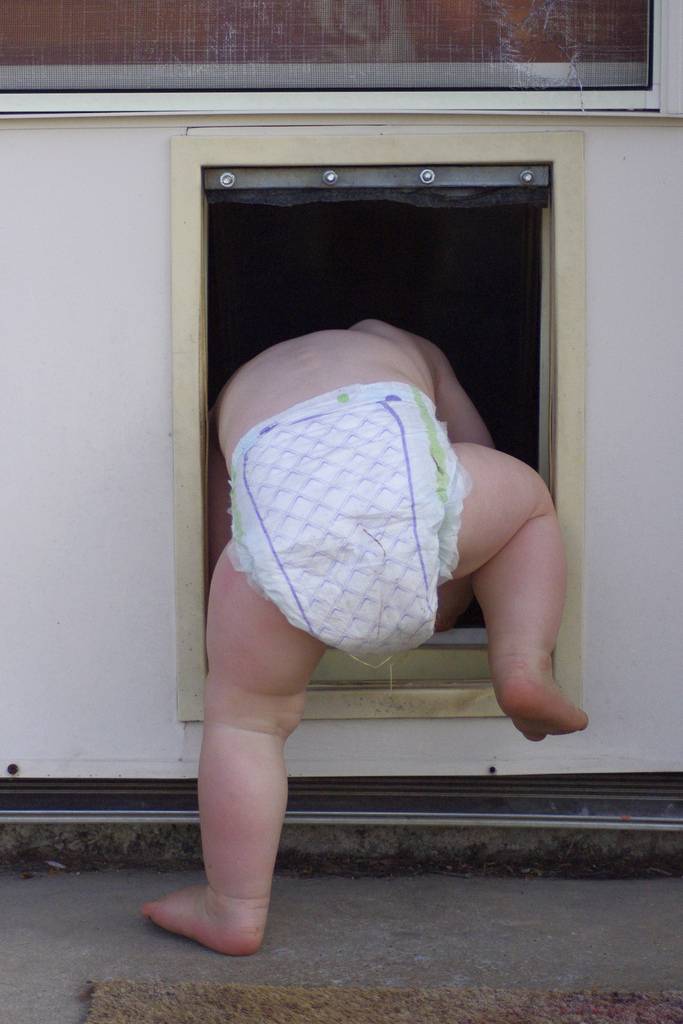Warm weather often means more time outdoors, family picnics, and playtime in the sun. But for babies, it can also bring an uncomfortable and sometimes worrying skin issue—heat rash. Known medically as miliaria, heat rash appears when sweat gets trapped under the skin due to blocked sweat glands.

Heat rash is common in infants under one year because their tiny bodies can’t regulate temperature yet, and their sweat ducts are still developing. If you’ve noticed little red bumps or blisters on your baby’s skin after a warm day, don’t panic. It’s a common summer skin irritation.
Heat rash is not dangerous; in most cases, it clears up on its own with some simple home care. Still, it can be uncomfortable for your baby, and no parent likes to see their little one itchy, fussy, or irritable.
This post will walk you through everything you need to know about baby heat rash—from what causes it to what it looks like, how you can prevent it, and what to do if your baby already has it. You’ll also learn the warning signs that mean it’s time to call your pediatrician.
Whether you’re a first-time parent or caring for your third baby, this guide will give you clear, practical tips to keep your child cool, comfy, and rash-free during those hot summer months. We’re here to help you feel confident and prepared, no matter how high the temperatures climb. Let’s dive in and keep your baby smiling all summer long!
What Causes Heat Rash in Babies?
Heat rash, medically known as miliaria, occurs when sweat becomes trapped beneath the skin due to blocked sweat ducts. Babies are particularly prone to this condition because their sweat glands are not fully developed, making it harder to regulate body temperature effectively. Several factors contribute to the development of heat rash in infants:
- Hot and Humid Weather: High temperatures and humidity increase sweating, which can overwhelm immature sweat ducts.
- Overdressing: Layering babies in heavy or non-breathable clothing can trap heat and sweat against the skin.
- Fever: Elevated body temperatures from illness can lead to excessive sweating, increasing the risk of blocked sweat ducts.
- Tight or Non-Breathable Clothing: Clothing that doesn’t allow air circulation can exacerbate sweating and prevent moisture from evaporating.

Recognizing these contributing factors can help in preventing and managing heat rash in babies.
Types and Appearance of Heat Rash
Heat rash manifests in different forms, each varying in severity and appearance:
Miliaria Crystallina
- Description: The mildest form of heat rash, characterized by tiny, clear, fluid-filled blisters that break easily.
- Common Areas: Typically appears on the head, neck, and upper trunk.
- Symptoms: Generally not itchy or painful, and resolves on its own within a few days.
Miliaria Rubra (Prickly Heat)
- Description: More severe than miliaria crystallina, presenting as red bumps or papules.
- Common Areas: Often found in skin folds, such as the neck, armpits, and groin.
- Symptoms: Can cause itching or a prickling sensation, leading to discomfort.
Miliaria Profunda
- Description: The least common form, involving deeper layers of the skin.
- Common Areas: Typically affects the trunk and limbs.
- Symptoms: Firm, flesh-colored bumps that may recur frequently.
Identifying the type of heat rash can guide appropriate treatment and care strategies.
Preventing Heat Rash
Prevention is key to keeping your baby’s skin healthy during hot weather. Here are effective strategies to minimize the risk of heat rash:
Dress Baby Appropriately
- Lightweight Clothing: Opt for loose-fitting, breathable fabrics like cotton to allow air circulation.
- Avoid Overdressing: Dress your baby in a single layer appropriate for the ambient temperature.
Keep Baby Cool
- Climate Control: Use fans or air conditioning to maintain a comfortable indoor environment.
- Shade and Ventilation: Ensure your baby stays in shaded areas outdoors and avoid peak sun hours.
Maintain Skin Dryness
- Regular Checks: Frequently check and gently dry areas prone to moisture accumulation, such as skin folds.
- Absorbent Materials: Use breathable diapers and change them promptly when wet
Lukewarm Baths
- Bathing Routine: Give your baby lukewarm baths to help regulate body temperature and soothe the skin.
- Drying Technique: Pat the skin dry gently with a soft towel; avoid rubbing, which can irritate the skin.
Implementing these preventive measures can significantly reduce the likelihood of heat rash development.
Treating Heat Rash
If your baby develops heat rash, prompt and gentle care can alleviate discomfort and promote healing:
Cool the Skin
- Environmental Adjustment: Move your baby to a cooler, less humid environment to reduce sweating.
- Cool Compresses: Apply a clean, damp cloth to the affected areas to soothe irritation.
Remove Excess Clothing
- Breathable Attire: Dress your baby in light, loose-fitting clothing to allow the skin to breathe.
Lukewarm Baths
- Soothing Baths: A lukewarm bath can help cool the skin and wash away sweat and irritants
- Avoid Soaps: Refrain from using soaps or lotions on the rash unless directed by a healthcare provider.
Air Drying
- Gentle Drying: After bathing, let your baby’s skin air dry or gently pat it dry with a soft towel.
Avoid Ointments and Lotions
- Pore Blockage: Many creams and ointments can block sweat ducts further; use only products recommended by a pediatrician.
Keep Diaper Area Dry
- Frequent Changes: Change diapers promptly to prevent moisture buildup.
- Diaper-Free Time: Allow your baby some diaper-free time to let the skin breathe.
These treatment steps can help resolve heat rash effectively and ensure your baby’s comfort.
When to Call the Pediatrician
While heat rash is usually nothing to worry about and often clears up with simple home remedies, there are times when you’ll want to reach out to your pediatrician for guidance and support. Trust your instincts—if something doesn’t seem right or if your baby seems uncomfortable beyond the usual, don’t hesitate to seek medical advice.
Here are signs that mean it’s time to make that call:
1. Persistent Rash
If your baby’s heat rash hasn’t improved after three to four days of keeping the skin cool, dry, and clean, it’s best to have it checked out. A persistent rash might mean it’s not just a heat rash or that it needs a different treatment approach.
2. Signs of Infection
Watch for signs that the rash may have become infected. These include:
- Swelling around the rash area
- Increased redness that spreads
- Warmth to the touch
- Pus or yellow discharge from the bumps
If you see any of these, your baby may need prescription medication like a topical antibiotic.
3. Fever
A fever alongside a rash could point to something more than just a heat rash—especially if it’s a high fever or it lingers for more than a day. Always call your doctor if your baby has a fever over 100.4°F (38°C) and is under 3 months old, or if they seem unusually sleepy or irritable.
4. Behavioral Changes
If your baby becomes
- Extra fussy or crying more than usual
- Unusually sleepy or difficult to wake
- Refusing to feed or drink
- Generally seeming “off” or not like themselves
These changes can signal that your baby is uncomfortable or unwell. Always take these cues seriously and check with your healthcare provider.
5. You’re Unsure or Concerned
Even if your baby doesn’t show clear signs of infection or severe symptoms, if you’re worried, it’s perfectly okay to call your pediatrician. A quick check-in can give you peace of mind and ensure your baby gets the right care.
At Omega Pediatrics, we encourage parents to reach out with any concern, big or small. When it comes to your baby’s health, there’s no such thing as a silly question. Better safe than sorry—especially when your little one can’t tell you exactly how they feel.
Enjoy Rash-Free Summer With Your Little One

Heat rash is a common and usually mild skin condition affecting many babies, especially during the warmer months when heat and humidity are high. Although it can look concerning—those red bumps, tiny blisters, and irritated skin—it’s typically nothing to fear.
What’s most important is knowing why it happens and how to respond quickly and gently when it does. Understanding the causes—like immature sweat glands, overdressing, or hot environments—helps caregivers make smart choices to prevent the rash from forming in the first place.
Simple actions like dressing your baby in light cotton clothes, keeping the environment cool, and drying skin folds regularly can go a long way in keeping your baby comfortable and rash-free. If heat rash does appear, soothing it with a lukewarm bath, allowing the skin to breathe, and avoiding heavy creams or lotions are usually all it takes to help your baby heal.
Always keep an eye on your baby’s skin and overall mood. If the rash doesn’t go away after a few days, if it looks infected, or if your baby seems extra fussy or feverish, don’t hesitate to reach out to your pediatrician. Your baby’s health and happiness are what matter most.
With a little awareness and daily care, you can protect your baby’s delicate skin and help them enjoy the sunny season safely. For expert advice on baby skin care, newborn health, and seasonal parenting tips, visit Omega Pediatrics’ blog and explore the helpful guides and insights.
Check out these related topics: Why is My Newborn Baby Skin Red? Exploring the 7 Causes for Better Care of Baby’s Sensitive Skin and What To Do for Newborn Baby Heat Rash: 9 Expert Tips for Soothe and Prevention
Your baby deserves to feel cool, cozy, and cared for—every day, all summer long.


